Mr. Shogo Minote opened an alternative educational establishment called "HILLOCK Primary School" in April 2022. He had a considerable number of years experience in teaching children at public elementary schools and gradually came up with the idea to realize "an education system whereby children can truly independently and proactively learn and develop their abilities." HILLOCK aims to enhance children's well-being by providing a learning environment using the "Free Progress Learning" approach, combining teaching and free exploration of learning activities. In this report, CRN Director Yoichi Sakakihara interviewed Mr. Minote, discussing his educational vision at HILLOCK.
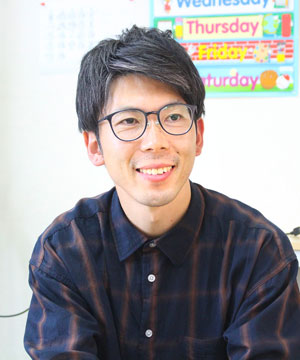 |
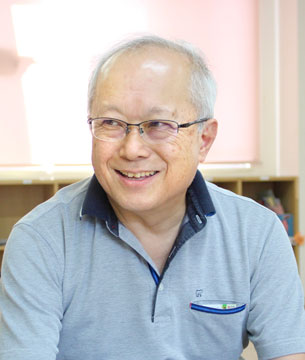
|
|
|---|---|---|
Eliminating tests and report cards to do away with unwanted competition among children
Sakakihara: Thank you for taking the time to talk with us today. First, please tell us about your HILLOCK Primary School (hereafter "HILLOCK").
Minote: HILLOCK is an alternative school. I opened it to provide education that helps children independently and proactively learn and develop their abilities. HILLOCK aims to enhance children's well-being by offering a learning environment using the "Free Progress Learning" approach, combining teaching and free exploration of learning activities. Currently, HILLOCK is operated in two locations: Setagaya School and Yoyogi School, with primary school children of first to fourth graders.
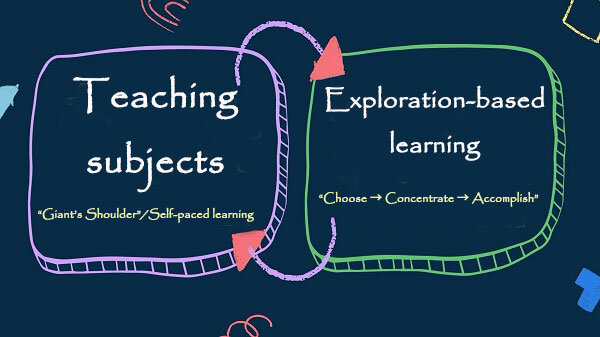 We support children's learning by combining teaching and free exploration of learning activities.
We support children's learning by combining teaching and free exploration of learning activities.Minote: The significant difference between the HILLOCK method and traditional public education is that we eliminate unwanted competition among children. We also abolished the use of tests and report cards. Instead, we employed the "Self-Paced Learning" approach and let children learn and develop on their own. Of course, HILLOCK is not a place where children simply spend time doing as little as possible and play freely. HILLOCK is a school that supports children's development. We strive to help every child to acquire and enhance the "ability to become happy."
About two-thirds of the children attending HILLOCK have some experience of truancy as a result of not being able to adapt to school. Some of them have developmental disorders. The remaining one-third of the children were enrolled by their parents who share the education philosophy practiced at HILLOCK or have misgivings about public education.
Sakakihara: You offer a very radical education at HILLOCK. While traditional schools motivate children's learning extrinsically by means of report cards and tests, HILLOCK focuses on the children's intrinsic value in learning to develop the "ability to become happy." Usually, when children take tests at school, about 50% of them will fail to achieve the average score. In contrast, since HILLOCK's ultimate goal is to enhance each child's "ability to become happy," children can freely explore learning activities and discover various means of enjoyment in their daily school life.
Now, please tell us why you decided to open HILLOCK.
Minote: I have 14 years of experience in teaching at public elementary schools. In my seventh year, I was relocated to a special-needs school. It was the first time I had taught children with severe intellectual disabilities. At that time I found that the teaching skills I had gradually accumulated over the years were now useless. Through this experience, I came to rethink the fundamental meaning of education, life, and human beings. Finally, I concluded that every child should receive an education that helps them to learn and grow individually and become self-motivated. If we can realize such a system of education, we can make children much happier, not only those in special-needs schools but also those in regular schools.
In the eleventh year of my teaching experience, when I was relocated to another school, I pursued my ideal educational method but could not cut out the tests and report cards which form part of the current educational framework. As Director Sakakihara said, motivating children's learning by giving academic scores and encouraging them to compete is, after all, for the sake of adults. Some children may end up experiencing unnecessary feelings of failure or self-contempt because of school tests and report cards, which they shouldn't have to feel. Some children can achieve good academic results under this system. They feel good at being a winner at that moment but may gradually lose sight of the objective of what they want to do. As such, I faced a dilemma: I wanted to teach children the enjoyment of education, life, and the world but was not able to do so under the current education system. Gradually, I came to think, "I can create an ideal school by myself!" That is why I opened HILLOCK.
Aiming to achieve transformational changes in public education extrinsically with the support of children's power
Sakakihara: To promote inclusive education, we must disseminate its philosophy, change teachers' mindsets, and implement reforms in the education industry. However, there is a limitation for teachers. Currently, the number of children refusing to attend elementary/junior high schools is said to be almost 300,000.* I suppose a great many teachers face a difficult struggle with children's truancy problems.
Minote: That's exactly right. Many teachers must feel helpless in the current public education system, even though they earnestly wish to resolve these issues. I know my approach is not orthodox. If I had done it ten years ago, I would have been considered antipathetic to public education.
I opened an alternative school outside the scope of public education partly because children's power is necessary to change the current education system. Suppose I had tried to change conventional practices within the scope of public education. In that case, it might be challenging to avoid philosophical confrontation. In this regard, I hope HILLOCK will serve as a role model to teach children the enjoyment of learning, which might change the current public education system.
Sakakihara: Now, please tell us how children are learning at HILLOCK.
Minote: HILLOCK does not use the school year system. All children interact with each other without knowing their age. We employ the "Self-Paced Learning" approach; therefore, there is no framework indicating what to learn in their academic year. In addition, we use online education content called "eboard" in all subjects and credits for children of first to ninth grade. Some children even bring their own textbooks from home to study. Children are at liberty to decide for themselves what to learn.
During their study time at HILLOCK, children can choose what they want to study. Some children have already completed their elementary school curriculum and advanced to junior high/senior high school curriculums. Some children just read books or have a break. HILLOCK staff are called Learning Sherpa instead of Teacher. Sherpa means a trekking guide, typically for mountain climbing in the Himalayas. We chose this word for our staff who always stand by and support children. Therefore, children address us by our name. We try to support children's learning and encourage them to find what they want to know and what they want to do instead of forcing them to study unwanted things. As Sherpas do, we always stand by them and think together to find a way to accomplish their objectives.
Every child seeks the "ability to become happy"
Sakakihara: The role of learning Sherpas is to give support and think together with children to find what they want to do and how to achieve their objectives.
Minote: That's right. To nurture the "ability to become happy," children must first know what they like. They should recognize on which occasion they feel happy, for example, staying with someone, living in natural surroundings, visiting inspiring places, etc. Gradually, they will find what they want to do and what occupation they want to pursue. Then, we plan what activities are good for them "now" in a backwards direction from their future objectives.
For example, if a child likes drawing, we try to encourage them by saying, "You can make painting your career, but you can continue painting even if you don't become a professional," "Good painters did other things, such as this activity. You can try it," or "This study may be useful in the future." By interacting and discussing with children in such a way, we seek a way to support children's development.
After finding their dream, some children concentrate on learning subjects as they think this is necessary for their dream. Some children feel motivated to learn through the enjoyment surrounding them and their interactions with friends. For example, one day, a child who disliked learning multiplication saw his peer doing division using writing. After that, he said, "It looks cool! I want to do it!" Then, he realized that doing division needs multiplication too. Now, he is willing to learn multiplication.
Another example is that, when a child from a Korean family was studying the Korean language, several children became interested in what he was doing and started playing together. As the learning Sherpas cannot speak Korean, children use the Internet to search for Korean textbooks and learn the language quickly. As you can see, in this modern world, children can learn almost anything without the help of adults.
Children can choose what they learn, which creates the necessity of learning
Sakakihara: If a child acquires multiplication skills, it must be helpful. Nevertheless, we cannot say whether such skills will be definitely indispensable for the child's future. Adults often say, "This will be useful for your future," to motivate children's learning. However, it seems natural for children to doubt what adults say. They would think, "Is it really true? It may not be necessary." When I was a child, I often had doubts about things too.
Minote: Me too (laughs). I often hear from educators who visit HILLOCK that they were surprised by children's clear answers when they ask, "Why are you studying this?" For example, when a child was asked, "Why are you studying the Japanese syllabary?" she replied, "I want to write a letter to my friend." Children can clearly explain what lies ahead of their learning.
Children will be self-motivated in learning once they realize that acquiring some skills can make many things more enjoyable. The learning Sherpas at HILLOCK are fully committed to supporting these children. If children find what they want to do or what to acquire, we help them do so. If children say, "I don't want to do this," we respect their decision. The important thing is that children choose whether or not they want to learn and what they want to acquire. This autonomous choice creates the necessity of learning.
Sakakihara: It is good that your staff support children's learning but give no instruction to make them do something. School teachers often tend to believe they should teach children everything; however, children can innately think about what they want to learn through their experiences and interactions with friends.
A five-year junior high school is planned to open at HILLOCK in 2024
Sakakihara: How do you maintain relationships with children's parents? Is there any difference from public education?
Minote: We post daily reports and photos of children's activities on a closed social media for their parents. In addition, we hold a monthly online meeting with parents for discussions and feedback. Some parents become anxious about the differences from public education, but such a reaction could be considered constructive. It could be quite dangerous if parents leave everything to us for children's education without having any doubt. Not only our staff and parents but also children might feel nervous about our new approach. To eliminate such anxiety, we always ask parents to speak out about anything they want to discuss together, seeking a better way for children's education.
While working at public schools, I often heard from parents, "The only reason we enrolled our child here is because we live in this area." This answer comes as no surprise, of course. However, because they did not choose this school in the same sense a parent would send their child to a private school, I often felt I should set aside my own opinions and give way to the parents' opinions.
I don't consider that HILLOCK is a perfect school for everyone. There may be children who cannot get along with our school environment. If some parents feel that HILLOCK is unsuitable for their child, we understand it is natural for them to discontinue. Having built such a relationship with parents, we can communicate more openly and have an equal relationship.
Sakakihara: Finally, please tell us about your future vision.
Minote: When talking with children about what kind of junior high school they wanted to attend, I often heard, "I wish HILLOCK had a junior high school." So we said, "You should build it by yourselves. We will surely support you." Starting from that conversation, we plan to open a HILLOCK junior high school for fifth- to ninth-grade children in April 2024.
We plan to operate a five-year junior high school because the three-year education of public junior high school seems too short. At least five years are necessary for children to learn various things toward their future dreams, including experiences through trial and error and setbacks. After completing two years at HILLOCK junior high school, they can choose to study at other private junior high schools or overseas schools. Or they can study at HILLOCK for five years and prepare for high school entrance exams. Opening a business is another option if there is no high school they want to go to. Children at HILLOCK fully understand the strength of every classmate and build solid friendships with each other. So I often tell children, "You can create a company together!" half-joking and half-seriously (laughs).
Besides the opening of a junior high school, I have various plans for HILLOCK. For example, I want to introduce more current events occurring around the world, conduct in-depth discussions on philosophical matters such as the meaning of life or happiness, and provide children with more opportunities for workplace experiences through collaboration with companies to help children gain their future vision. My focus will remain on providing a learning environment where children can learn and develop their abilities independently and proactively.
Sakakihara: I'm extremely impressed by your ideas and initiatives. Thank you very much for taking the time to share your thoughts with us.
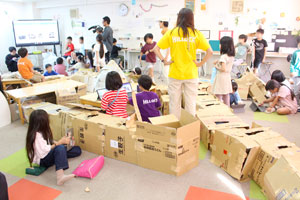
Photo 1: We invited an artist to teach the children to create something using cardboard. After discussions, the children decided to make a maze. After completing the maze, the children took photos of the maze parts they liked with a tablet. Then, the children were asked to name the maze. Various ideas were suggested, including naming reasons, such as "Hot Underground," "Mole and Maze," and "Fallen Spring Tree."
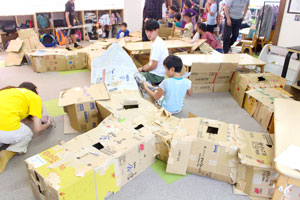 |
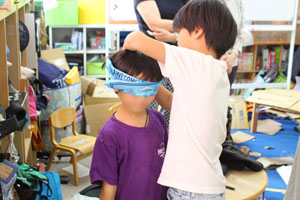 |
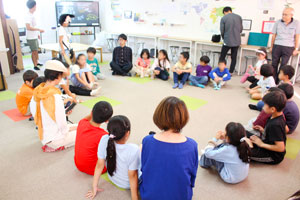
Photo 4: Finally, the artist and the children gathered and discussed what they wanted to do in the next art class. Reflecting on the activities of that day, the children suggested new challenges such as "I want to make a more complicated maze," "I want to put some traps in the maze to make it more exciting," and so on.
* Data: "Summary of the Results of the Survey on Problematic Behavior, Truancy, and Other Problems Related to Student Guidance" (2022) published by the Ministry of Education, Culture, Sports, Science and Technology
(https://www.mext.go.jp/content/20231004-mxt_jidou01-100002753_2.pdf in Japanese)
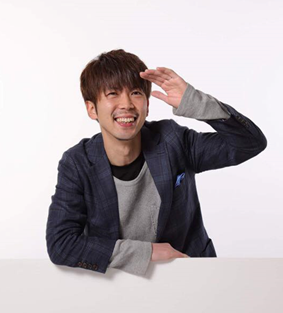
Shogo Minote
Mr. Minote is the Principal of HILLOCK Primary School and the director of HILLOCK Setagaya School. He has 14 years of experience in teaching at public primary schools. While teaching school children, he also studied at the School of Graduate Studies, Open University of Japan, and earned his master’s degree in the Sciences of Human Development and Education. He previously worked for Maebara Elementary School, a school nationally well-known for its programming education, as head teacher in charge of research and ICT. In April 2022, he opened an alternative school called “HILLOCK Primary School.” His publications include “Children Will Learn on Their Own” (Gakuyo Shobo), “How to Use ICT to Realize the Best Education for Every Child” (Gakuyo Shobo), “Creating Classroom Using ICT in Special Schools for Children with Intellectual Disabilities” (co-authored; The Earth Kyoikushinsha Co., Ltd.), and “Understanding Before & After! Research Update” (Meijitosho Shuppan Corporation).
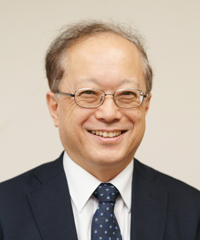 Yoichi Sakakihara
Yoichi SakakiharaM.D., Ph.D., Professor Emeritus, Ochanomizu University; Director of Child Research Net, Executive Advisor of Benesse Educational Research and Development Institute (BERD), President of Japanese Society of Child Science. Specializes in pediatric neurology, developmental neurology, in particular, treatment of Attention Deficit Hyperactivity Disorder (ADHD), Asperger's syndrome and other developmental disorders, and neuroscience. Born in 1951. Graduated from the Faculty of Medicine, the University of Tokyo in 1976 and taught as an instructor in the Department of the Pediatrics before working with Ochanomizu University.
- [Aiming to Realize an Inclusive Society] Providing Inclusive Childcare Means Offering a Wider Variety of Choices for Daily life to All Children
- [Aiming to Realize an Inclusive Society] Creating a Community Where Children and Adults Can Feel WAKUWAKU (Excited) Through Close Collaboration with Educational, Medical and Social Welfare Professionals
- [Snuggling Up to Our Differences] Episode1 : What is the Motivation to Listen to Adults?














